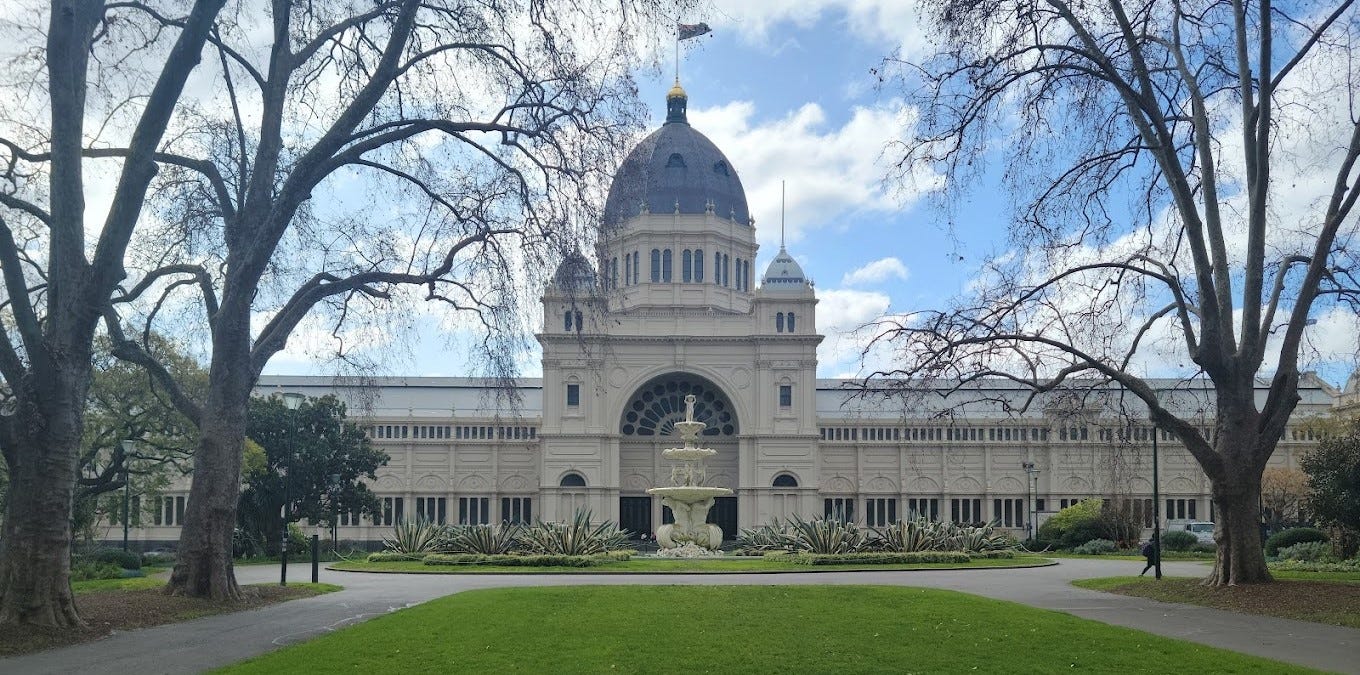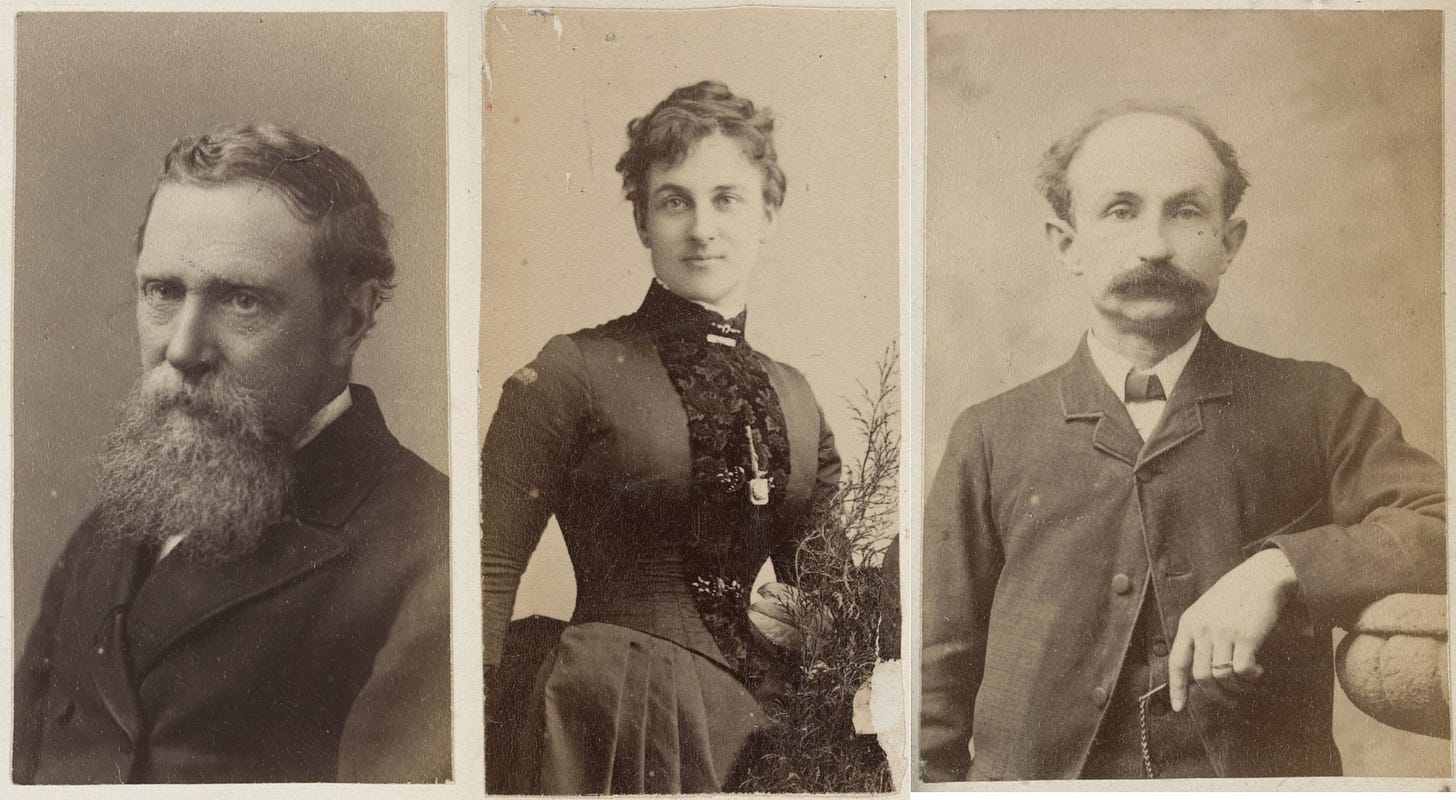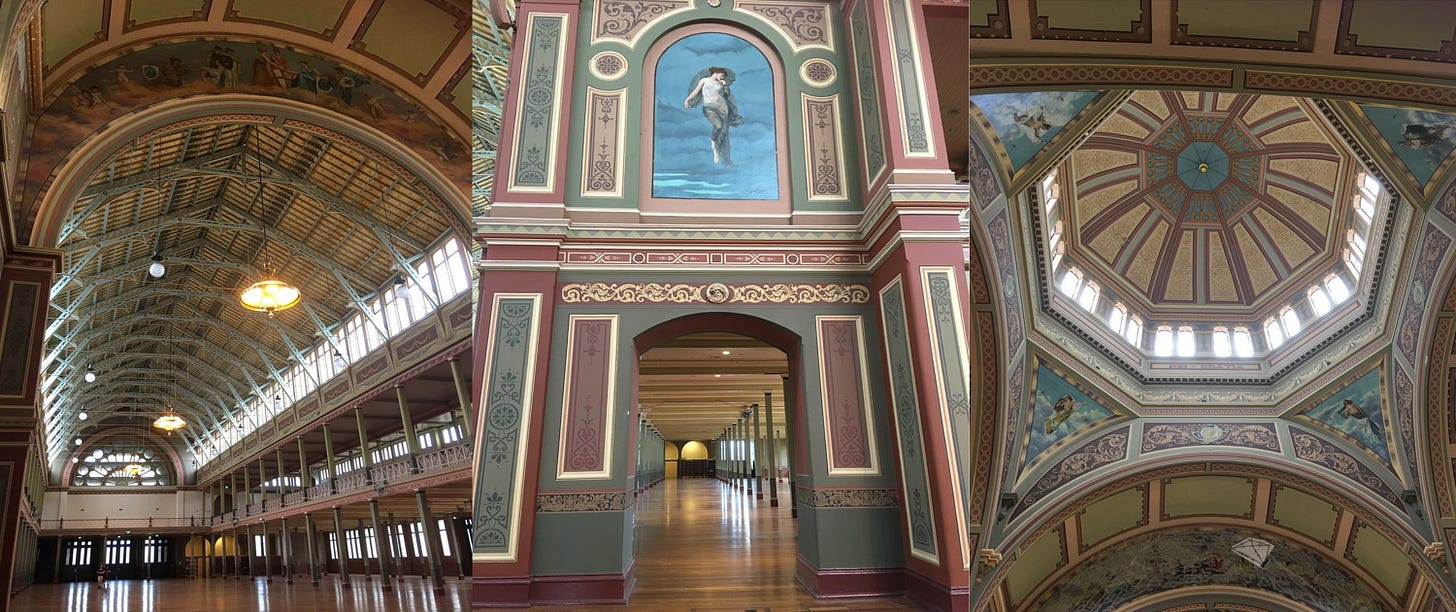Happy New Year! Hope you’ve had a lovely break, whether you’ve been lazing with a book, feasting with other folk, or out and about. All the above, for me.
Are you planning the year ahead? I have been too.
Scroll down for:
a look inside a grand Melbourne monument
and what it has to do with the new year
A gracious survivor
Early this month, my spouse and I went off on a favourite holiday activity — we toured a historic site. The Royal Exhibition Building is a Melbourne icon. It’s the last survivor of its species — a grand dame of Victorian architecture. Worldwide, this is the only exhibition hall still standing from the nineteenth century’s golden age of exhibitions. (London’s Crystal Palace, New York’s Crystal Palace and Sydney’s Garden Palace have all burned down.)

Melbourne’s first peoples once gathered on this spot, before they were displaced by colonisation. In 1879 the colony of Victoria decided to build instead a gathering place of a very Victorian sort — a huge hall for an upcoming international show. Amazingly, the Royal Exhibition Building was completed in only 18 months. And it was originally ten times the size of the main hall you see above. It came in under budget, at £250,000. Despite using real 18K gold on that top cupola!
Melbourne’s population was only 280,000 at the time. Yes, we were rich, by global standards! The 1880 exhibition attracted over a million visitors and was a roaring success. Visitors delighted in such rarities as chewing gum and the first rotary lawn mower.
A follow-up centennial exhibition in 1888 introduced further innovations — a replica Eiffel Tower built of champagne bottles, and photo passes for staff and exhibitors.

In 1901, the Exhibition Building took on national significance, when Australia’s first national parliament opened in it.

One of the first parliament’s defining acts was to legislate the White Australia policy. Lofty architecture is no guarantee of lofty thought. Or you could say our notions of good and grand have changed.
Repurposing
The Exhibition Building’s uses changed too. In 1919 it became a temporary hospital for influenza, with a morgue in the basement. In WWII it housed air force officers. They weren’t kind to the grand old lady, prizing off her gilt for beer money. Then the buildingbecame a migrant reception centre after the war. In the 1960s it was a ballroom. During Covid it was put to medical use again as a vaccination centre.
I’ve also sat through several Melbourne Uni graduation ceremonies here. And scribbled through a first year English exam — a feminist take on Anna Karenina, as I vaguely remember.
On to 2024…
Where am I going with this? Times change. The Royal Exhibition Building wasn’t originally intended as a hospital, but it’s still a worthy, community-minded use of space. Priorities change. Sometimes we have to change. I previously wrote, successfully, for kids. Now I don’t. I’ve re-purposed, like the Exhibition Building.
As you consider 2024, do you need to re-purpose too? Maybe to something less grand and public, but good all the same? Don’t undo art for alcohol, though. That really seems a waste.
Whatever the year holds, I wish you all the best. I look forward to brightening your 2024 with more heartfelt history, and homegrown fiction.
If you found this online or via a friend, click below for monthly emails like this one:

